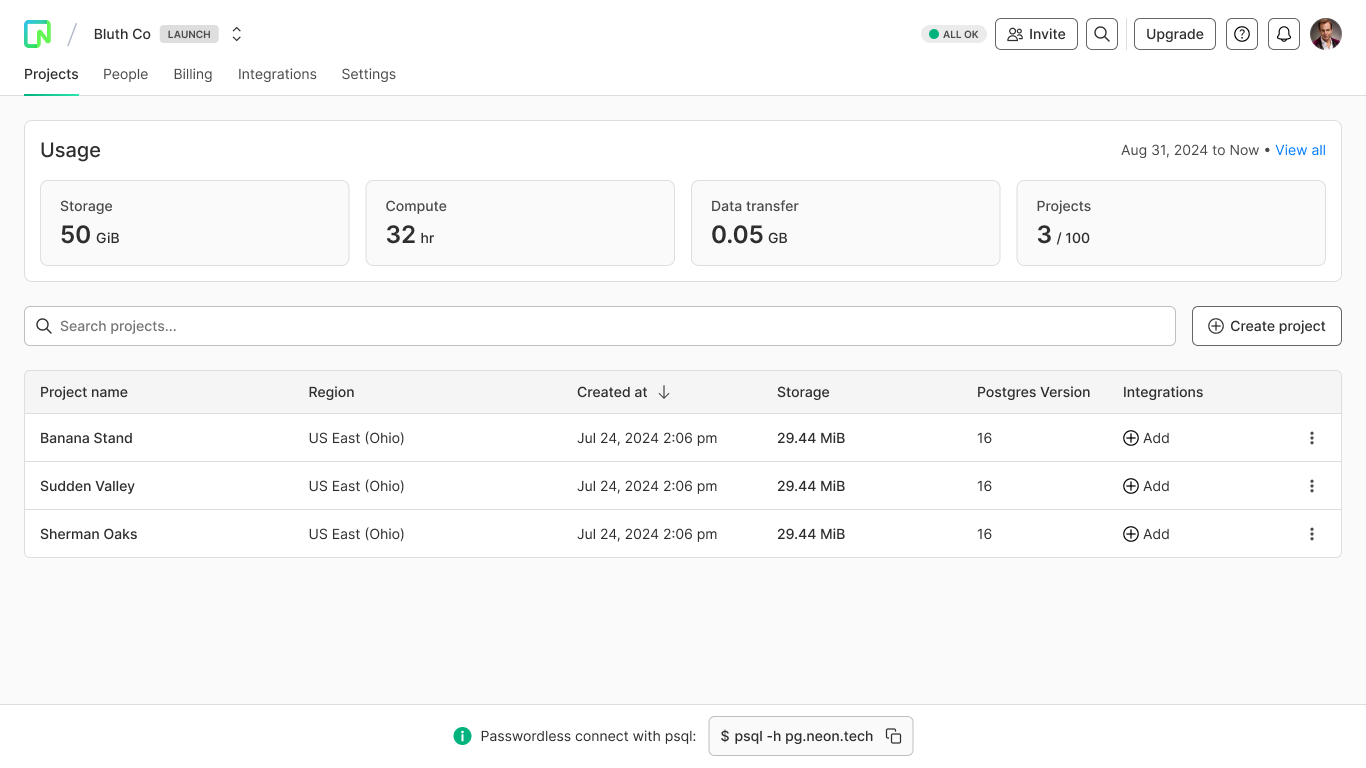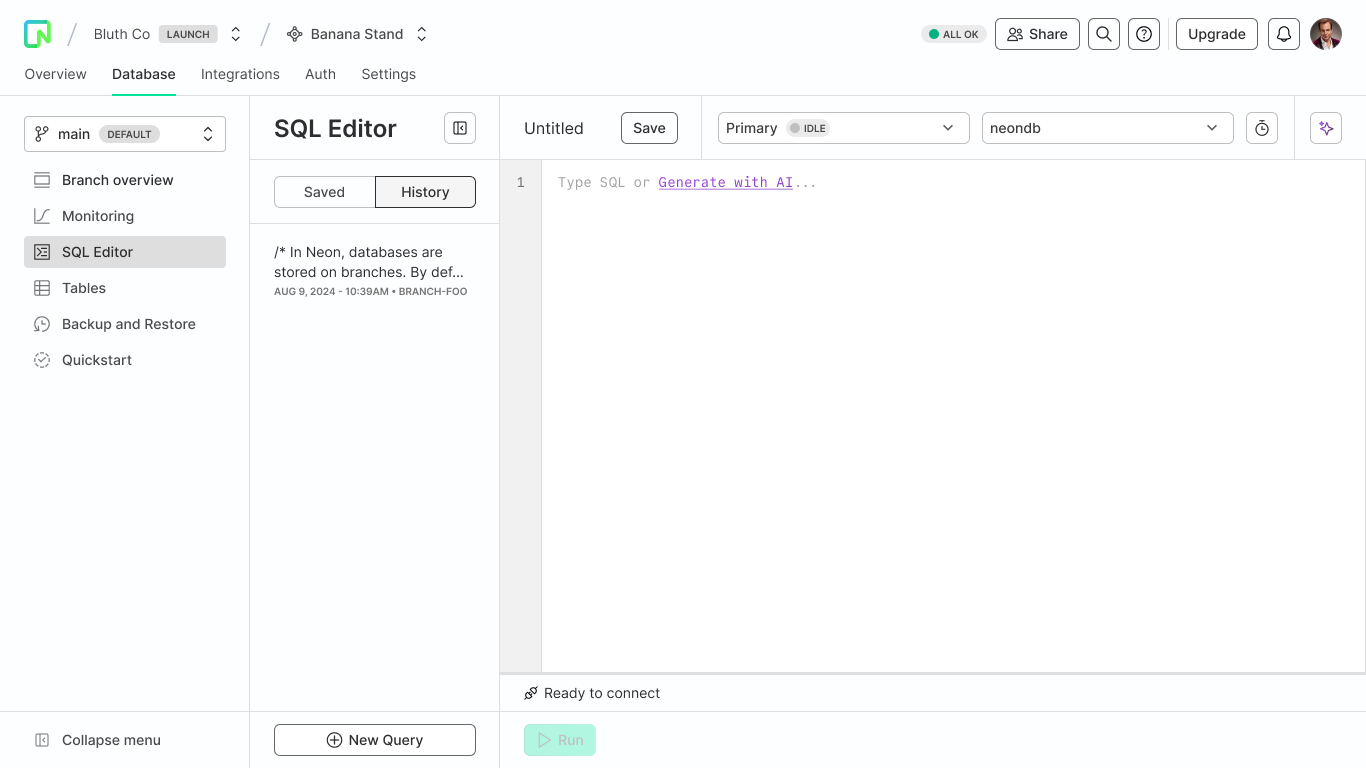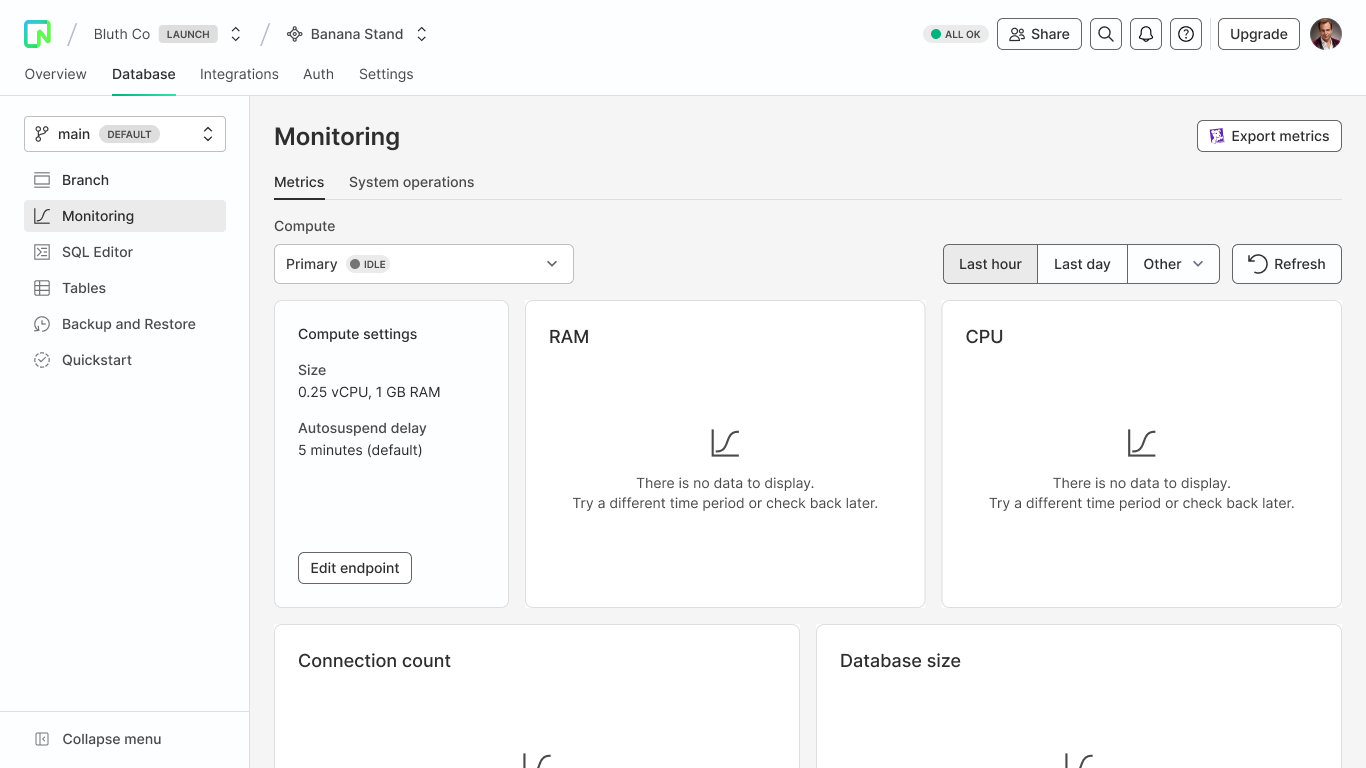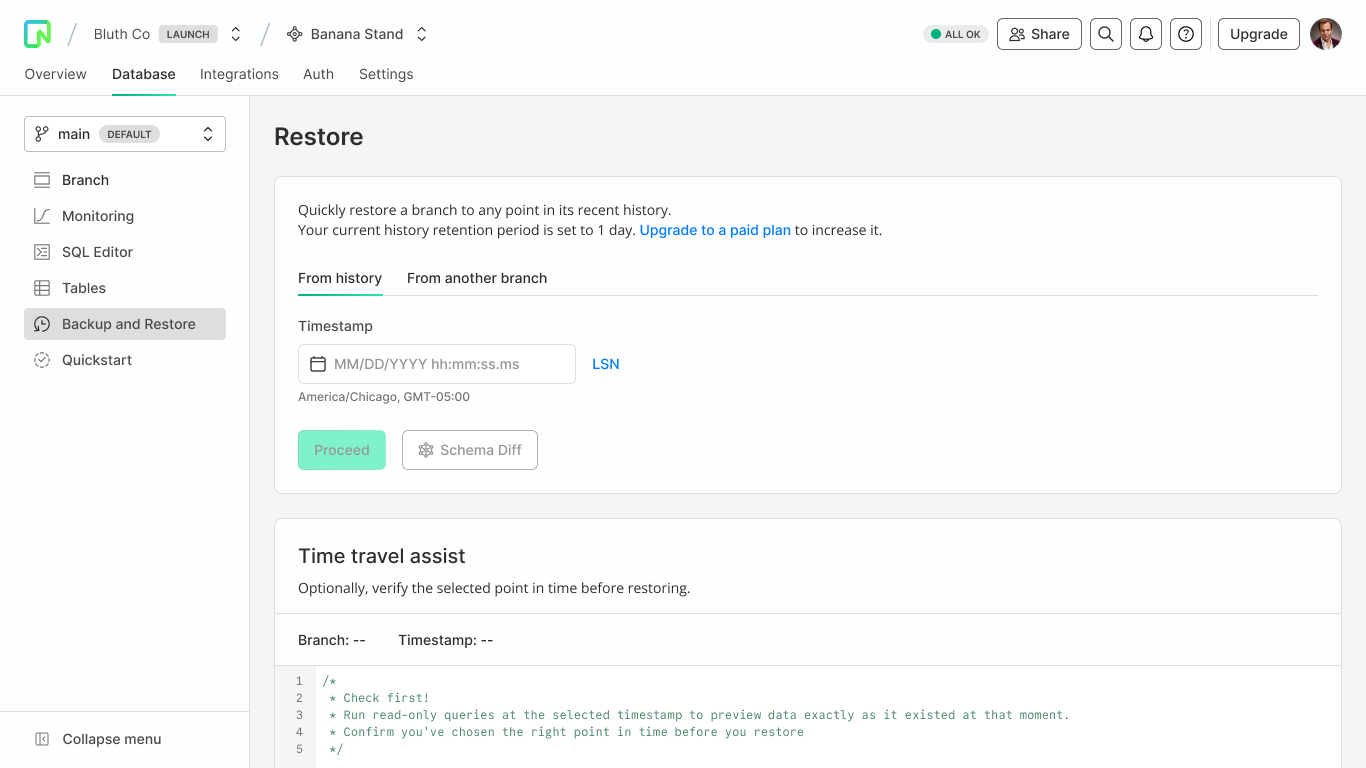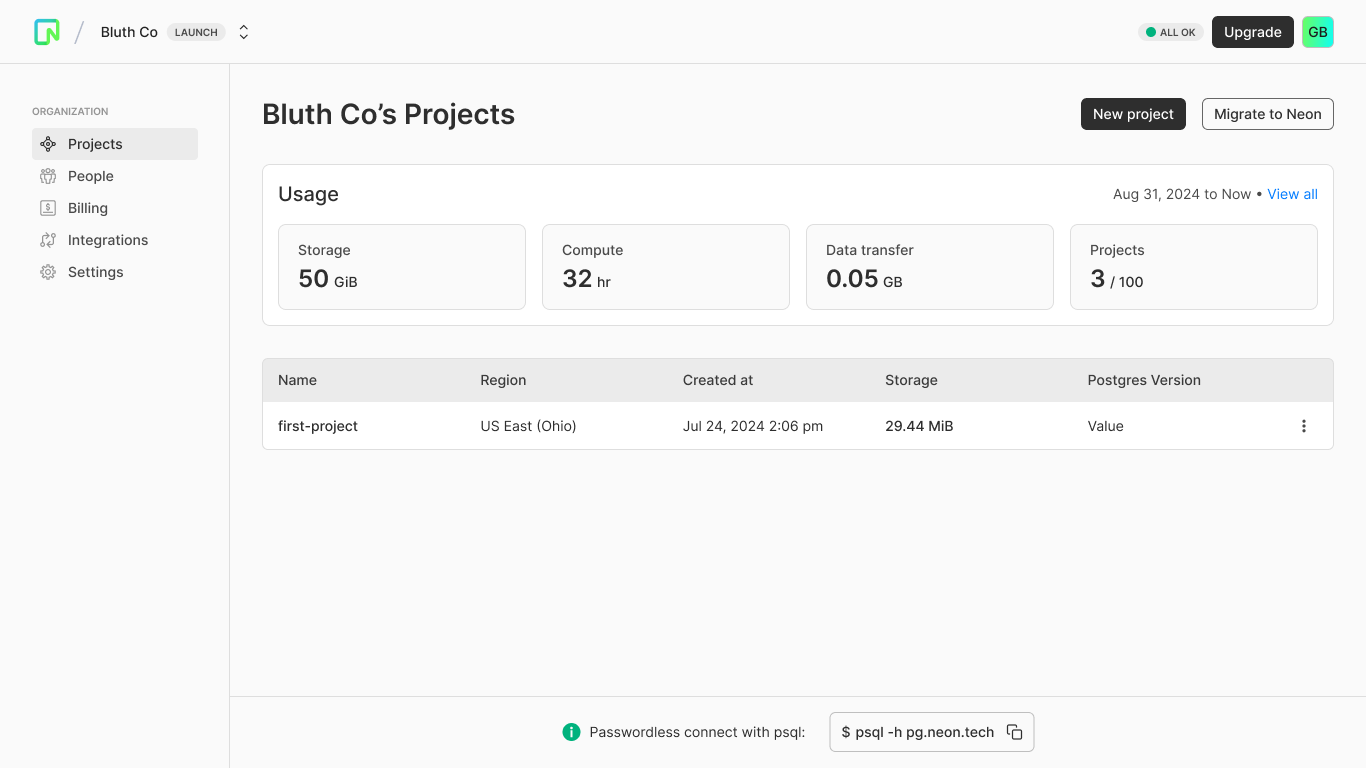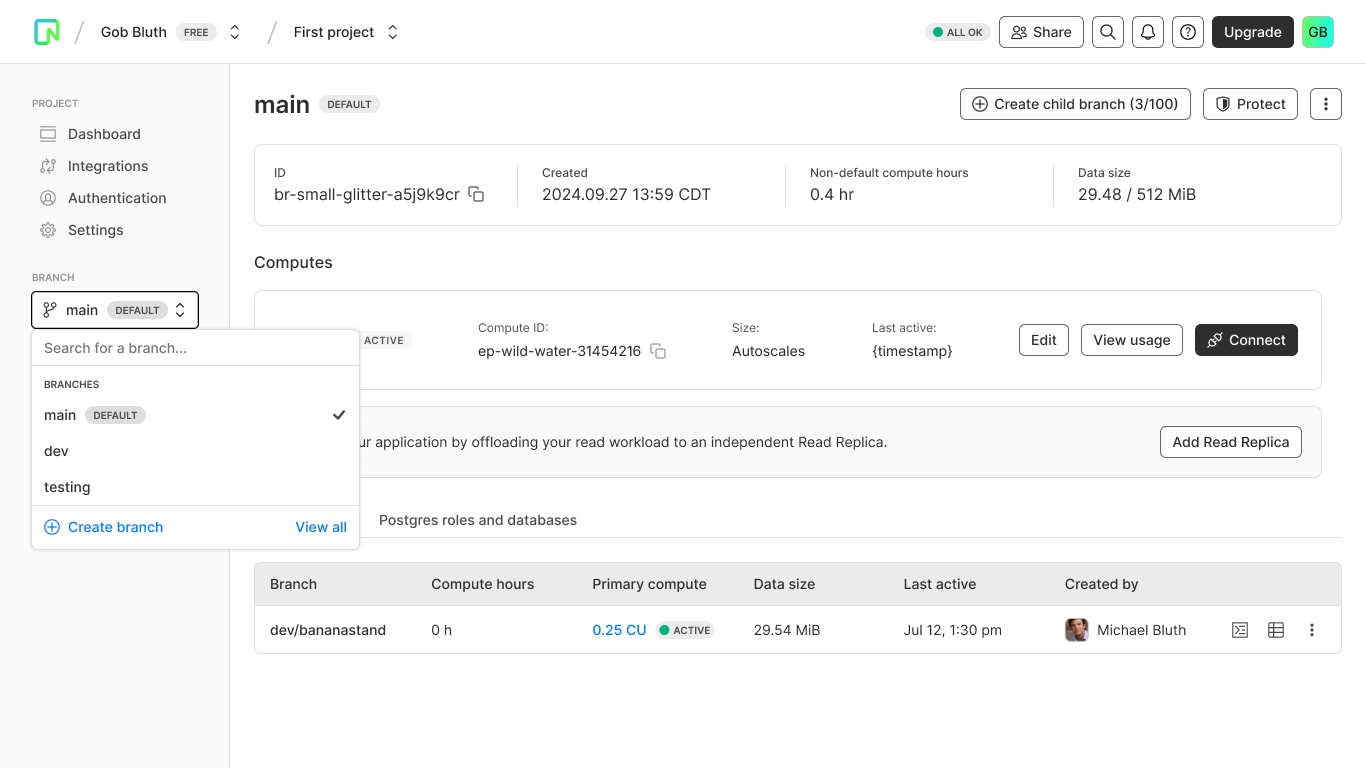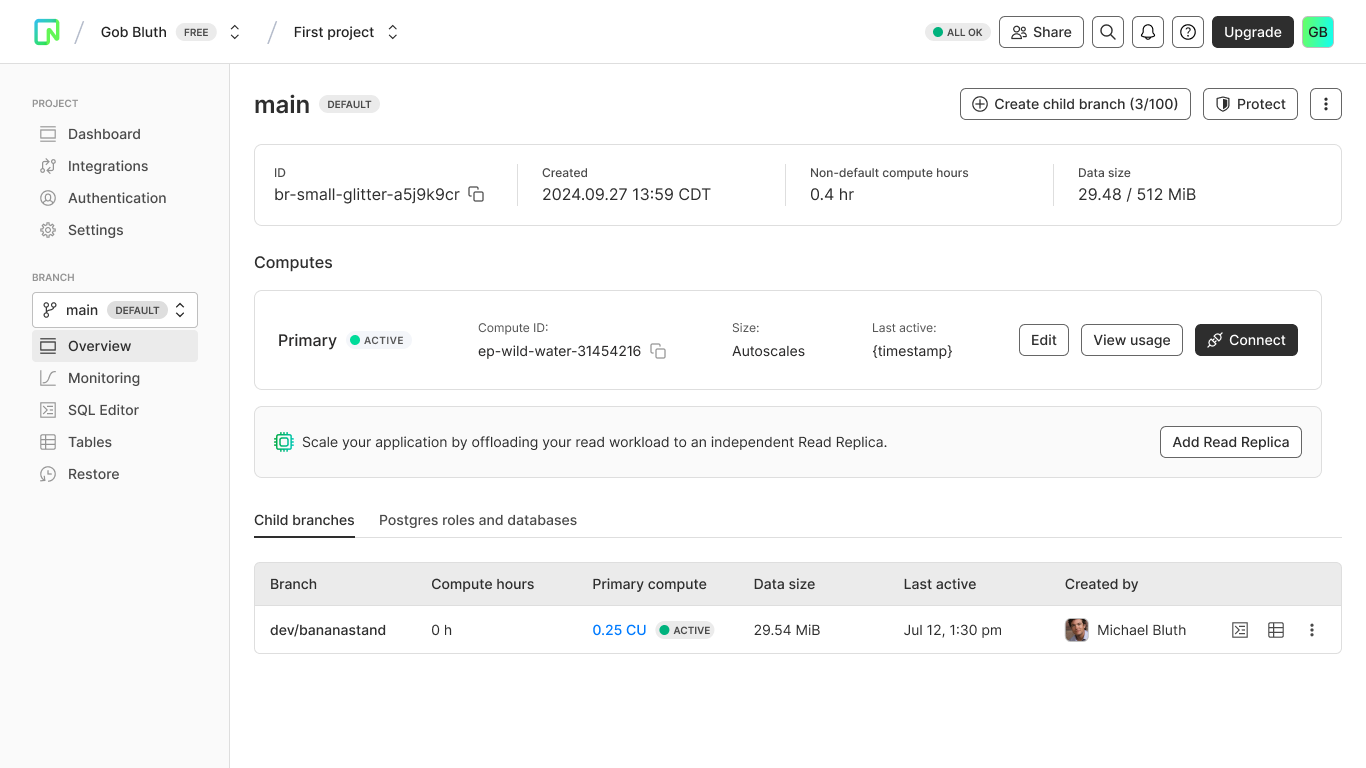Neon: Console Navigation
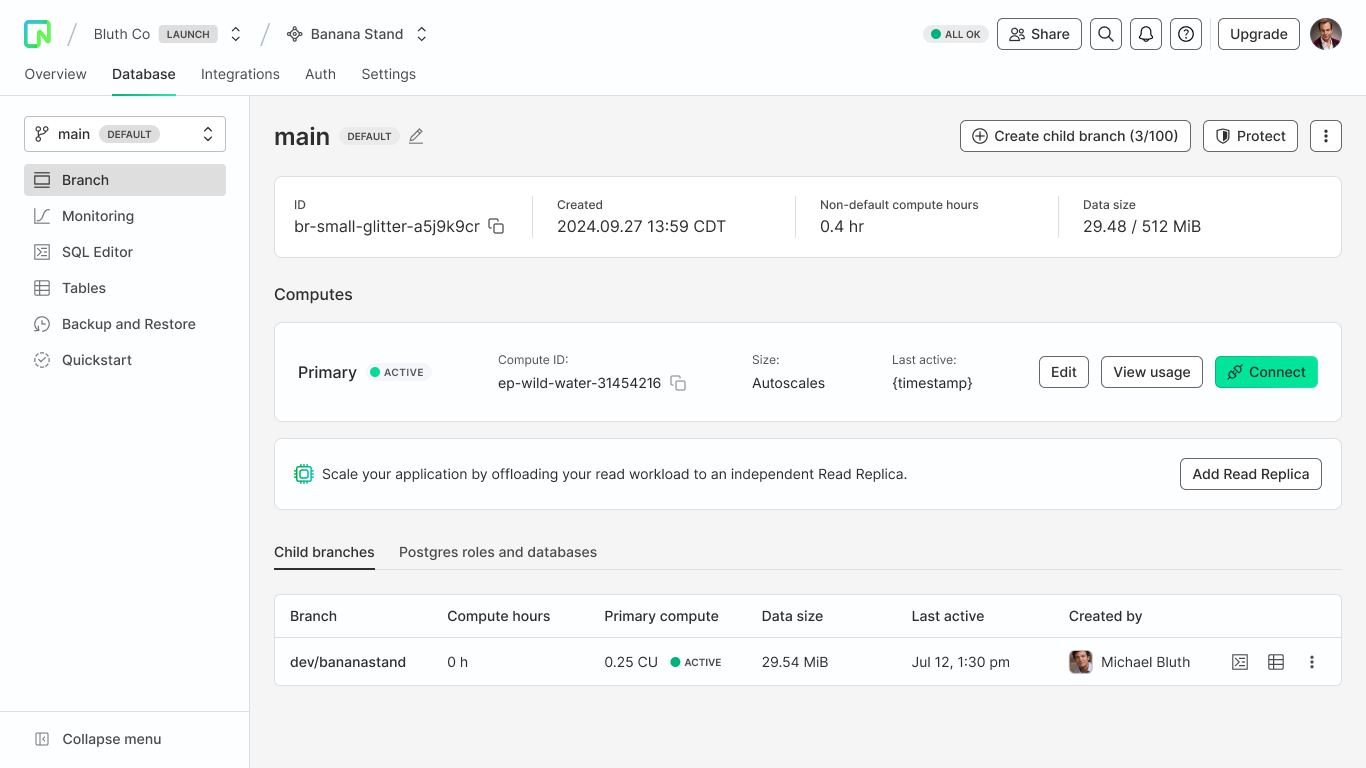
Overview
I led a redesign of Neon’s Console navigation to reduce developer friction, increase product clarity, and lay the foundation for scalable growth. By setting a long-term vision and executing iterative improvements, we improved orientation, raised feature adoption, and reduced support volume—strengthening Neon’s position as a modern, developer-first Postgres platform.
My Role
Head of Design @ Neon
Led the strategy, vision-setting, and execution of a multi-phase navigation redesign. Focused on reducing friction, increasing clarity, and enabling product scalability.
Key Responsibilities:
- Set long-term navigation vision
- Synthesized feedback into action plans
- Built alignment across PM, Eng, and leadership
- Delivered phased rollout to ship value quickly
- Owned prototyping, QA, and design quality
The Challenge
Clear, intuitive navigation is foundational to Neon’s mission of becoming the go-to platform for modern, serverless Postgres. Without it, developers struggle to adopt key features—slowing activation, undermining confidence, and limiting growth.

Neon’s flat navigation structure exposed internal product structure rather than aligning with developer mental models.
“I just wanted to connect data and get started — this slowed me down.” — Neon user
Problems Identified: (Based on 60k sign-ups per week)
15%
Drop-off right after sign up
30%
Users engaged with key features (Auth, Monitoring, etc)
40%
Of tickets were nav-related
Why the IA wasn’t working
- All features shown with equal weight — no hierarchy
- Branches inconsistently surfaced or buried
- Navigation exposed backend structure, not workflows
Result:
- Users felt lost
- Confusion around environments
- Increased reliance on documentation
What customers saw
- Organization / Personal Account
- Project
- Dashboard
- Branch
- SQL Editor
- Default branch set
- Restore
- Integrations
- Monitoring
- Default branch set
- Authorize
- Identity
- Project Settings
- Quickstart
- Branch
- Overview
- Table editor
- default branch set
- Org Billing
- Org People management
- Org settings
- Project
What the IA Should Have Been
To reduce friction and align with how developers think, we needed to:
- ✅ Separate global from contextual actions
- ✅ Structure navigation around Projects and Branches
- ✅ Surface environments (branches) consistently
Proposed Structure:
- Org Level: Billing, People, Settings
- Project Level: Overview, Branches, Roles
- Branch Level: SQL, Tables, Logs, Restore
This ideal structure became the foundation for both Milestone 1 and the long-term vision.
What users need
- Organization / Personal Account
- Project
- Project Overview
- Branch
- All Branches
- Specific Branch
- Overview
- Table editor
- SQL editor
- Monitoring
- Integrations
- Neon Auth
- RLS
- Identity
- Restore
- Project Settings
- Org Billing
- Org People management
- Org settings
- Project
What We Heard
Qualitative (from user feedback & HubSpot transcripts):
-
🗣 “Felt like a step backward in usability.”
-
🗣 “Why was a branch created with my name on it?”
-
🗣 “I had no idea where to go next.”
Themes:
- Orientation breakdowns
- Low branch adoption
- High early churn
Goals & Alignment
User Goals
- Know exactly where I am and what I can do, instantly.
-
Connect my data and start building without reading the docs.
-
Move between projects, branches, and tools without losing context.
Business Goals
-
Increase user activation by streamlining the path to value.
-
Reduce early abandonment by simplifying the console experience.
-
Raise the bar for developer UX and position Neon as a category leader.
Setting the Vision (Milestone 2)
Global Navigation System for Scalability
To future-proof the Console, I designed a scalable global navigation system that clearly distinguishes between organizational and contextual actions. This vision:
- Introduces a top-level nav for org-wide tools and project switching
- Pushes deep workflows (like SQL editing or restore) into contextual side panels
- Maintains orientation and reduces decision fatigue
This long-term design sets the foundation for a more intuitive, extensible, and developer-first Console experience.
Execution: Milestone 1 – Contextual Branch Navigation
What We Shipped First
- Persistent branch context in side panel
- Clear entry points for branch switching/creation
- Simplified project structure
How:
- Validated side panel over breadcrumbs
- Partnered with PM/Eng to scope and ship
- Delivered in one quarter
This was the first phase of our long-term vision. By starting with the most friction-heavy workflows—branching—we were able to validate the new structure and gain momentum for future improvements.
Early Outcomes from Milestone 1
Milestone 1 released early May 2025, with early signals:
-
✅ +12% increase in branch switching
-
✅ –9% support tickets related to environment confusion
“It’s finally clear which branch I’m in and how to switch. Game changer.”
— User
This success created momentum and internal buy-in for the broader nav redesign.
Partnering for Success
Cross-Functional Alignment:
- Collaborated with 4 PMs across Console pillars
- Scoped roadmap with leadership
- Built confidence with early wins
Design Leadership:
- Defined success metrics and rollout plan
- Maintained quality across milestones
- Framed navigation as strategic UX foundation
Summary & Takeaways
This case study shows how I:
- Set a vision rooted in user needs and business outcomes
- Delivered impactful work in phases
- Unified teams across orgs
- Designed scalable, dev-first UX systems
Great design isn’t just UI—it’s aligning teams to shape a better product experience.
